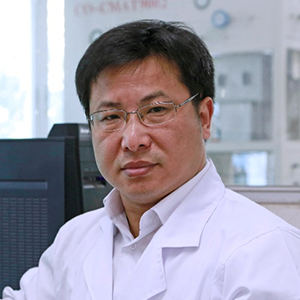
Lilong Jiang
Fuzhou University, China
Bio
Prof. Lilong Jiang is the professor of Fuzhou University, the director of National Engineering Research Center of Chemical Fertilizer Catalyst (NERC-CFC), the head of “Ammonia Energy Catalysis Engineering” Innovative Research Group (National Natural Science Fund), the dean of School of Chemical Engineering, Fuzhou University, as well as the chairman of Fuda-Zijin Hydrogen Energy Science & Technology Co., Ltd (FZHE). His study focuses on synthesis, conversion and utilization of ammonia. NERC-CFC has a 50-year research experience on industrial ammonia synthesis and hydrogen production. He has published over 160 SCI papers and obtained over 130 authorized invention patents. He and his team develop new generation low-pressure Ru-based ammonia synthesis catalysts and achieve their applications in large-scale ammonia synthesis plant. Meanwhile, he also leads his team to develop low-temperature ammonia cracking catalysts and their matched reactors. Proceed to the next step, he and his team develop low-temperature ammonia cracking systems, on-site ammonia-fed hydrogen refueling stations and indirect ammonia fuel cells.
Title
Energy Storage and Power Generation via Ammonia-Hydrogen Conversion Technologies
Abstract
Ammonia is a promising hydrogen carrier and fuel in the future “Carbon Neutrality” energy map. National Engineering Research Center for Chemical Fertilizer Catalysts (NERC-CFC) from Fuzhou University has studied the key industrial catalysts associated with ammonia-hydrogen conversion for over 50 years, which include ammonia synthesis catalysts, ammonia decomposition catalysts, etc. Based on the key catalysts, NERC-CFC has developed the matched reactor and process technologies to realize high-efficiency hydrogen-to-ammonia, ammonia-to-hydrogen and ammonia-to-power. Furthermore, NERC-CFC collaborate with Zijin Mining to establish Fuda-Zijin Hydrogen Energy Science & Technology Co., Ltd (FZHE). At present, FZHE has developed a series of equipment including 100~1000 Nm3/h-level ammonia decomposition equipment, 100~1000 kg/day-level on-site ammonia-fed hydrogen refueling station, 3~100 kW-level indirect ammonia fuel cells and 50 kW-level ammonia-fueled engines. This lecture will introduce the progress and commercialization practice of NERC-CFC and FZHE on the ammonia-hydrogen conversion technologies.

Alasdair Cairns
University of Nottingham, United Kingdom
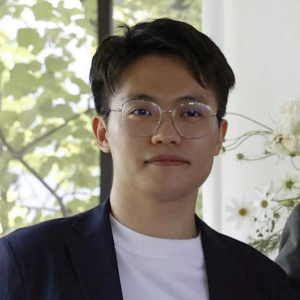
Sikai Geng
University of Nottingham, UK
Bio
Professor Alasdair Cairns is Director of the Powertrain Research Centre at the University of Nottingham, UK. He has 25 years’ experience into research and development of advanced engines, fuels and hybrid propulsion systems. This includes 10 years’ experience in industry with automotive consultancy business Cosworth Technology (later rebranded MAHLE Powertrain) leading large UK-based collaborative research projects. He returned to academia in 2010, joining Brunel University London as a senior lecturer in automotive engineering and was promoted to full professor in 2013, where he specialised in low carbon heavy duty engines. He joined Nottingham in late 2016 and currently manages a large research portfolio of ~£11m specialising in decarbonised propulsion for heavy transport. This includes being the lead academic for the UK EPSRC “MariNH3” programme, a 5-year £5.51m funded project seeking to overcome key challenges around marine ammonia internal combustion engines (see https://marinh3.ac.uk/). He has published over 100 related international publications, is a board member of the UK Institute of Mechanical Engineers Powertrain Systems and Fuels Group and a member of the UK Advanced Propulsion Centre Academic Advisory Group.
Bio
Dr Sikai Geng is a Research Fellow at the Powertrain Research Centre, University of Nottingham (UoN), working under the supervision of Prof Alasdair Cairns. He received his PhD from Nottingham in 2024, during which he developed and commissioned a novel ammonia-fuelled single-cylinder test rig. This platform has resulted in several high-impact international publications. His research focuses on advanced combustion modes, particularly pre-chamber technology (Jet Ignition), to improve combustion characteristics and emissions performance across various fuel combinations in spark ignition engines for future thermal propulsion systems. In his current role, Sikai is involved in several UK EPSRC-funded programmes, aiming to address key technical challenges and support the disruptive NH3 engine concepts with high thermal efficiency and ultra-low NOx emissions. Notable projects include the Decarbonised Clean Marine: Green Ammonia Thermal Propulsion (MariNH3) and the UK Clean Maritime Hub, which explores advanced retrofit technologies for hydrogen and its derivatives, particularly ammonia, to support both domestic and international shipping sectors. Beyond his primary research, Sikai is actively contributing to the development of the Zero Carbon Translation Centre at UoN, which seeks to accelerate advancements in hybrid propulsion solutions for heavy transport. This new collaborative Centre of Excellence features a megawatt-scale decarbonised engine experimental facility - TITANZ (Test Engines to Accelerate Net Zero Shipping and Power Generation), including a true scale large single-cylinder marine engine marking a first-of-its-kind development in the UK.
Title
Ammonia-hydrogen in lean burn spark ignition engines: Advancing zero-carbon transport and power generation
Abstract
Ammonia (NH 3 ) is emerging as a promising fuel for decarbonised heavy transport due to it being a convenient hydrogen carrier, despite generally unfavourable combustion and toxicity attributes. This study examines the impact of co-fuelling gaseous ammonia and hydrogen, via port injection, on combustion, fuel economy, and engine-out emissions using a spark-ignited single-cylinder research engine. Under stoichiometric conditions, the engine operated stably on pure NH 3 at low-to-medium speeds and medium-to-high loads, requiring less than ~20% hydrogen at the lowest loads. However, engine-out NH 3 emissions remained high (up to ~9000ppm). An alternative lean burn spark ignition strategy was developed to enable the potential use of Selective Catalytic Reduction (SCR) technology, where NH 3 slip can be directly utilised as a NOx reductant, eliminating the need for conventional urea-based fluid injection. Ideally, such SCR systems operate with a fixed "alpha ratio" of ~1 (the ratio of volumetric emissions of engine-out NOx and NH 3 ), indicating the ideal amount of reductant to simultaneously consume NH 3 slip and decompose NOx. The study included parametric speed and load sweeps to evaluate the ideal combinations of hydrogen substitution ratio and relative air-to-fuel ratio (λ). It was concluded that operating the engine with ~20% hydrogen and slightly lean λ = 1.2 would result in an ideal alpha ratio of ~1 across the majority of the map, with little variation in alpha ratio or lambda noted with changing engine speed and load. The results indicate the promise of a lean burn spark ignited hydrogen co-fuelling strategy for balancing engine-out NOx and NH 3 emissions via SCR after-treatment. The supplementary hydrogen also resulted in small improvements in indicated thermal efficiency of 1-2% compared to stoichiometric operation with 100% ammonia, with calculations demonstrating this may help offset any penalties from onboard hydrogen production via thermo-catalytic NH 3 cracking. This study highlights the viability of hydrogen co-fuelling to optimise emissions and improve efficiency in ammonia-fuelled engines.
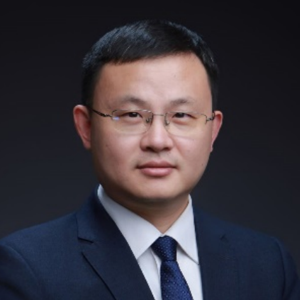
Yuyang Li
Shanghai Jiao Tong University, China

Ghenadie Bulat
Siemens Energy, UK
Bio
Yuyang Li is a professor and vice dean of the School of Mechanical Engineering at Shanghai Jiao Tong University. His research interests include combustion kinetic and dynamics, low-carbon combustion technology for gas turbines, and novel combustion techniques. He was elected as a Fellow of the Combustion Institute and has received several prestigious awards, including the Wuzhonghua Outstanding Young Scholar Award from the Chinese Society of Engineering Thermophysics, the Research Excellence Award from the Combustion Institute, the China Youth Science and Technology Award, the 2nd Grade State Natural Science Award (2/4) and the Excellent Young Scholar from National Natural Science Foundation of China. He has led over 20 projects and published over 180 papers, with over 5000 SCI citations and an H-index of 46.
Bio
Dr. Ghenadie Bulat is the Head of New Technologies for Gas Services at Siemens Energy where he leads a global team of highly qualified experts. He drives the innovation and excellence in all disciplines required for the success of products of the future. Ghenadie joined Siemens in 2003, however his experience includes more than 20 years of engineering and management within Product Development and Technology Innovation. Dr. Bulat obtained his PhD from Imperial College London, and his engineering degree from Technical University of Moldova, he is a Chartered Engineer, a Member of Institution of Mechanical Engineers, The Combustion Institute, and a visiting professor of combustion at Imperial College London.
Title
Decarbonatization of gas turbine through hydrogen and ammonia: Status and strategies in combustion research
Abstract
Achieving decarbonization goals is a crucial development direction in the field of gas turbine power generation, as gas turbines serve as important tools for peak regulation in future carbon-neutral energy systems. The application of carbon-free fuels such as hydrogen and ammonia plays a significant role in this process. To advance gas turbine development, both academia and gas turbine OEMs have actively taken steps, jointly exploring fundamental research and industrial technological advancements in key combustion areas. This report will introduce Siemens Energy’s strategy in hydrogen and ammonia gas turbine combustion technology, as well as the fundamental and applied research progress made by Shanghai Jiao Tong University in addressing key challenges in ammonia combustion technology. It will also provide an outlook on critical issues that need to be addressed in the future.

Siyul Chung
BHI Co., Ltd. , South Korea

Won Yang
Korea Institute of Industrial Technology, South Korea
Bio
Siyul CHUNG was born in Seoul in 1985, received B.S. in Architectural Engineering from Konkuk University and M.S. in Mechanical Engineering form Gyeongsang National University. He joined BHI Co., Ltd. in 2012 and has worked over 10 thermal power plant projects as a boiler combustion and pressure/non-pressure part engineer. Currently he is involved in 2 ammonia co-combustion R&D projects for coal power plants, funded by Ministry of Trade, Industry and Energy (MOTIE). In these R&D projects, he is developing ammonia-oil duel fuel burner and ammonia supply equipment.
Bio
Won Yang is a principal researcher at the Korea Institute of Industrial Technology (KITECH) and a professor at the Korea National University of Science and Technology (UST). He has been working on the combustion of solid fuels such as coal, solid waste, and biomass, mainly focusing on applications in thermal power plants. Since joining KITECH in 2006, he has led over 20 government-funded projects and over 10 company-funded projects in this area, and has published approximately 50 papers in peer-reviewed international journals. Currently, he is also working on the development of an energy management system (EMS) for power plants, waste incineration plants, smart farms, and manufacturing factories. Currently he is involved in 4 ammonia co-combustion projects for coal power plants, funded by Korea Electricity and Power Corporation (KEPCO), Ministry of Trade, Industry and Energy (MOTIE) and Ministry of Science and ICT (MSIT), as well as several projects on EMS funded by MOTIE and Ministry of Environment (ME). He is a board member of the Korea Society of Combustion (KOSCO).
Title
Demonstrative studies of ammonia co-firing to coal power plants in Korea: Current status and plans
Abstract
Ammonia co-firing to coal power plants is one of the promising means for the reduction of CO2 emissions. In the 10th plan of long-term electricity supply and demand (released in January 2023), the Korean government announced that 6.9 TWh would be produced from ammonia co-firing to coal by 2030, and 20.9 TWh by 2036. Targeting the completion of demonstration of 20% (LHV basis) co-firing to commercial coal power plants (2 pulverized coal power plants and 2 circulating fluidized bed (CFB) power plants), several research projects have been carried out for combustion optimization, minimization of NOx emission, securing safety for large-scale usage of ammonia fuel, and development of a strategy for raising the co-firing ratio to 50%.
In the first presentation by KEPCO (Korea Electricity and Power Corporation), which is in charge of transporting and distributing electricity as well as power generation, the status and plan of the demonstration projects will be outlined. Their activities and strategy to secure carbon-free ammonia and to reduce CO2 emissions via ammonia co-firing will also be covered. KEPCO's research on ammonia co-firing in their 0.7 MWth furnace and development of a 1 MWth-scale 100% ammonia-firing burner will be exhibited with some results. The second presentation (by the Korea Institute of Industrial Technology) will focus on the details of combustion optimization of ammonia co-firing (ratio of 0 to 40%). Bench-scale (80 kWth) experimental findings for burner optimization will be shared and discussed. Additionally, the impacts of ammonia co-firing on the efficiency of Pulverized Coal (PC) power plants and Circulating Fluidized Bed (CFB) boilers will be evaluated and compared for co-firing ratios ranging from 0% to 30%, through process simulation of two commercial power plants.
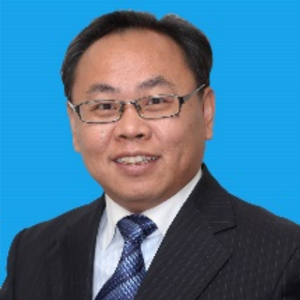
Mingfa Yao
Tianjin University, China
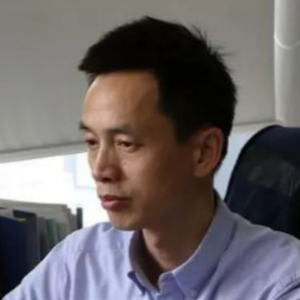
Chaohui Wu
CPGC, China
Bio
Prof. Mingfa Yao, who was graduated and gotten PhD degree from Tianjin University in 1999. He is a chair professor of Tianjin University, head of the Innovation Research Group supported by the National Natural Science Foundation of China. From March 2009 to March 2021, he served as the director of the State Key Laboratory of Internal Combustion Engines (Tianjin University). In 2011, he was awarded the National Outstanding Young Scholarship supported by the National Natural Science Foundation of China.
Prof. Yao has been engaged in the research of engine combustion reaction kinetics, combustion theory and combustion technology. In recent years, he has focused on researching fuel chemical energy storage and zero carbon energy power systems. He was awarded the "Distinguished Visiting Fellow Award" by the Royal Engineering Society, and was selected as a fellow of SAE International and a fellow of Combustion Institute in 2020.
Bio
TBD
Title
Discussion and Engineering Practice of Combustion Mode for IC Engines Fueled with Ammonia
Abstract
Ammonia is a promising carrier of hydrogen, and ammonia is an important way for internal combustion (IC) engines to achieve zero carbon emissions. However, the key problems restricting the application of ammonia in IC engines are the difficulty of ignition, the slow spread of flame and the high emission of NOx. This presentation first theoretically studied the combustion and emission characteristics of different combustion modes achieved by direct injection of diesel and ammonia. The results showed that compared with premixed combustion, ammonia diffusion combustion has higher combustion efficiency, thermal efficiency and less ammonia slips. Ammonia diffusion combustion has the characteristics of "local rich combustion and overall lean combustion", with significantly lower NOx and unburned ammonia emissions than premixed combustion, and can avoid the generation of N2O. Then, a comparative study was conducted from an engineering perspective on the feasibility of ammonia premixed combustion and diffusion combustion technology routes for small and medium bore marine low-speed engines. The parameters for the performance of the ammonia diesel dual-fuel IC engine, such as power/cylinder, indicated thermal efficiency, ammonia slips, nitrogen oxide emissions, and combustion temperature field, have been preliminary determined. After conducting comparative case studies in combination with performance requirement, the preferred solution will undergo detailed engineering research, which mainly includes studying the fuel injector structure and its position arrangement to derive various possible refined cylinder structure and position solutions. Subsequently, CFD analysis will be carried out individually to assess their influence on combustion performance. By adjusting injection parameters, exhaust valve timing, and control strategies to carry out multi-parameter optimization test verification combined with single cylinder engine (SCE) tests, simulation confirmation and robust analysis,the final ammonia engine performance is determined. This lays the foundation for the engineering implementation of product performance, package, reliability, and cost. Finally, the product test results show that the ammonia diffusion combustion technology solution meets the needs of engine design and can be launched into the market.
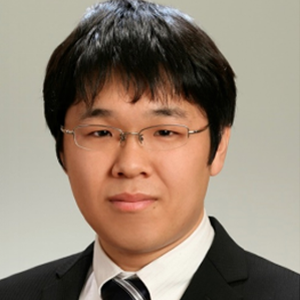
Akihiro Hayakawa
Tohoku University, Japan
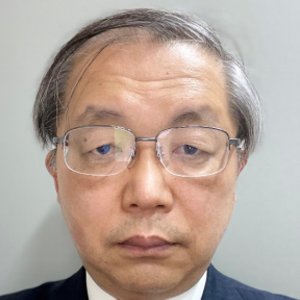
Norihiko Iki
National Institute of Advanced Industrial Science and Technology, Japan
Bio
Akihiro Hayakawa is an associate professor at Institute of Fluid Science (IFS), Tohoku University, Japan. He received his PhD in March 2013 from Kyushu University, Japan. He joined the High Speed Reacting Flow Laboratory (Prof. Hideaki Kobayashi’s group) at IFS in April 2013 as an assistant professor, and joined ammonia combustion research project. From April 2015 to March 2016, he was a visiting researcher at University of Cambridge (Prof. Simone Hochgreb’s group), UK. He promoted to associate professor in April 2020. His research interests are turbulent combustion, high pressure combustion, high pressure flame measurement using PLIF and LITGS, supersonic combustion. Also, he has studied ammonia combustion, such as laminar burning velocity at high pressure and high temperature conditions, product gas characteristics, flame stability in swirling flow, liquid ammonia spray combustion and oxygen-enriched flame combustion. He received JSME Young Engineers Award (2018), Best Paper awards from the Combustion Society of Japan (2019, 2020, 2023), Incentive Award from the Combustion Society of Japan (2022), 2022 Energy and Fuels Rising Star from ACS Publications (2022), Young Investigator Award from the Steering Committee of ASPACC 2021 (2023) and The Commendation for Science and Technology by the Minister of Education, Culture, Sports, Science and Technology (The Young Scientists' Award) (2024).
Bio
Norihiko Iki is a Invited Senior Researcher of National Institute of Advanced Industrial Science and Technology (AIST) , former Deputy Director-General, Fukushima Renewable Energy Institute, AIST(FREA). . He has been working on the combustion and novel system of gas turbine. He got B. A. in Precision Engineering in Tohoku University and achieved M.S. and Ph. D. in Precision Engineering in Tohoku University. Since joining AIST in 1994, he attended many government-funded projects and collaborative research i.e. semi-closed gas turbine, ammonia gas turbine, ceramic gas turbine, IGCC, IGFC, distributed energy systems, in the fields of energy and environment. He led R&D projects of ammonia gas turbine of AIST. Several demonstrations of ammonia power generation using micro gas turbine were achieved. Research Field: Gas turbine, Turbomachinery, Combustion, Spray
Research Theme: Combustion of hydrogen carrier, Cycle analysis of thermal engine
Recent projects: Ammonia-fueled gas turbine, hydrogen-oxygen combustion turbine
Title
Ammonia combustion study and demonstration of ammonia gas turbine
Abstract
Tohoku University, AIST, and industries began developing an ammonia gas turbine more than 10 years ago. There were several issues of ammonia combustion i.e. ignition, flame holding, NOx emission. Tohoku University revealed combustion properties of ammonia and demonstrated ammonia stable flame using the small swirl combustor. AIST succeeded gas turbine power generation by using starting up fuel, preheating air and the prototype swirl combustor for ammonia gas fuel. SCR can reduce NOx emission below 10ppm.
Tohoku University proposed rich-lean staged combustion concept and demonstrated reducing NOx emission in lab-scale experiments. AIST and industries tested several design parameters of low NOx combustor and designed new combustors. Gas turbine power generation with low NOx combustor was succeeded. NOx emission was reduced to 1/5 level of first prototype ammonia gas turbine and operational range became wider.
Liquid ammonia spray combustion is one of the recent issues of ammonia gas turbine. Tohoku University showed liquid ammonia spray combustion is possible using pressure swirl atomizer. AIST scaled it up to 50kW class gas turbine combustor and demonstrated liquid ammonia spray combustion bridging the gap with industries.

Agustin Valera-Medina
Cardiff University, UK

Ross Docherty
Flogas Britain subsidiary “Protech Group”, UK
Bio
Professor Agustin Valera-Medina has participated as PI/Co-I on 31 industrial projects with multi-nationals including PEMEX, Rolls-Royce, Siemens, Ricardo, Airbus and EON (>£35M). He has published 221 papers (h-index 37), 89 of these specifically concerning ammonia power. Prof. Valera-Medina led Cardiff’s contribution to the Innovate-UK ‘Decoupled Green Energy’ Project (2015-2018) led by Siemens and in partnership with STFC and the University of Oxford, which aims to demonstrate the use of green ammonia produced from wind energy. He is currently PI of various projects (SAFE-AGT (EP/T009314/1), FLEXnCONFU (884157), OceanREFuel, etc.) to demonstrate ammonia power in turbine engines, Internal Combustion Engines and furnaces. He has been part of various scientific boards, chairing sessions in international conferences and moderating large industrial panels on the topic of “Ammonia for Direct Use”. He has supported two Royal Society Policy Briefings related to the use of ammonia as energy vector, and he is the principal author of the book “Techno-economic challenges of ammonia as energy vector”. He is Co-Director of the Institute of Net Zero Innovation, Cardiff University Director of the Centre of Excellence on Ammonia Technologies (CEAT). He is a Fellow of the Learned Society of Wales (2024).
Bio
Ross Docherty is a Director of Flogas Britain subsidiary “Protech Group”. With over 30 years’ experience within the HVAC industry, Ross has fulfilled several senior technical roles, with specialism in complex heat process systems. He is renowned as a field combustion specialist with a varied career working across several industry sectors. During his career he has commissioned several industrial combustion plants & provided specialist training to engineers globally. He has latterly progressed into commercial development roles & sits on many working groups in the advancement of future fuels & emerging technologies to support industry’s drive towards low carbon solutions & sustainable energy sources.
Title
AMBURN – Ammonia for LPG Replacement in medium size boilers
Abstract
Currently ~4.5 million tonnes of oil are consumed in the off-mains industrial market annually in the UK. These energy intensive processes contribute to point source emissions of 14.2 MtCO2/y. Businesses and industries in these locations often cannot rely solely on electricity to satisfy their process heating requirements. Decarbonisation of these sites therefore presents a significant and pressing challenge. Therefore, th Amburn project will develop and demonstrate a 1 MW ammonia-fed steam boiler to help decarbonise off-grid businesses across the UK. Funded by the Department for Energy Security & Net Zero as part of the UK Government’s £55m Industrial Fuel Switching Competition, Flogas Britain and Cardiff University will prove that ammonia is a viable, cost-effective renewable fuel for large energy users off the mains gas grid. Phase 2 of Amburn will build upon the main findings outlined in the feasibility study of Phase 1, further developing the design of Amburn, conducting two stages of testing to enable a scale up of two orders of magnitude throughout the project, and finally carrying out a demonstration at a real customer site.



 loading......
loading......